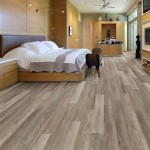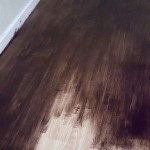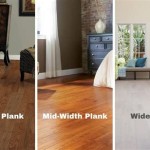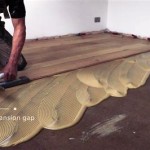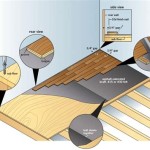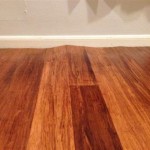```html
Locker Room Flooring Options: A Comprehensive Guide
Locker rooms are high-traffic, demanding environments that require flooring solutions capable of withstanding heavy foot traffic, moisture, and the potential for bacterial growth. Selecting the appropriate flooring material is crucial for ensuring safety, hygiene, and longevity. A variety of options are available, each with its own set of advantages and disadvantages regarding cost, durability, maintenance, and aesthetic appeal.
This article provides a detailed overview of the most common locker room flooring options, outlining their key characteristics and considerations for selecting the optimal choice. Factors such as slip resistance, resistance to cleaning agents, ease of installation, and long-term cost effectiveness are examined to provide a complete understanding of the available solutions.
Key Point 1: Understanding the Demands of Locker Room Environments
Locker rooms present several unique challenges that influence flooring selection. Moisture is a constant factor due to showers, spills, and wet clothing. This necessitates flooring materials that are water-resistant or waterproof to prevent mold and mildew growth, which can pose health risks and compromise the structural integrity of the subfloor. Constant moisture also increases the risk of slips and falls, making slip resistance a paramount concern.
High foot traffic is another significant factor. Locker rooms experience frequent use, placing considerable wear and tear on the flooring surface. The chosen material must be durable enough to withstand this constant abrasion and maintain its appearance over time. Frequent cleaning is also essential to maintain hygiene and prevent the spread of bacteria and fungi. The flooring must be resistant to the harsh chemicals found in cleaning agents without degrading or discoloring.
Furthermore, aesthetic considerations play a role. While functionality is paramount, a visually appealing locker room can contribute to a positive user experience. Flooring options that offer a variety of colors, patterns, and textures can enhance the overall ambiance and create a more welcoming environment.
Key Point 2: Exploring Common Locker Room Flooring Materials
Several materials are commonly used for locker room flooring, each with its own strengths and weaknesses. These include, but are not limited to, epoxy, vinyl, rubber, tile, and concrete.
Epoxy Flooring:
Epoxy is a thermosetting resin that is applied as a liquid and hardens into a durable, seamless surface. It offers excellent resistance to water, chemicals, and abrasion, making it a popular choice for locker rooms. Epoxy is also relatively easy to clean and maintain, requiring only regular sweeping and mopping. It can be customized with various colors and textures to enhance aesthetics and improve slip resistance. However, epoxy can be more expensive than some other options, and its installation requires specialized equipment and expertise.Vinyl Flooring:
Vinyl comes in sheet and tile formats, both offering water resistance and durability. Sheet vinyl provides a seamless surface, minimizing the risk of water penetration and bacterial growth. Vinyl tiles are more susceptible to water damage at the seams but offer greater design flexibility. Vinyl is relatively inexpensive and easy to install, making it a budget-friendly option. However, it can be prone to scratches and dents, especially in high-traffic areas, and may require more frequent replacement than other materials.Rubber Flooring:
Rubber flooring is known for its excellent slip resistance and cushioning properties, making it a safe and comfortable option for locker rooms. It is also durable and resistant to impact, making it suitable for areas where weights or equipment are frequently dropped. Rubber flooring comes in rolls and tiles and is relatively easy to install. However, it can be more expensive than vinyl and may require specialized cleaning products to maintain its appearance. It can also have a distinct odor, especially when new.Tile Flooring:
Ceramic and porcelain tiles are durable, water-resistant, and easy to clean, making them a traditional choice for locker rooms. They are available in a wide range of colors, patterns, and sizes, offering significant design flexibility. Tile is also resistant to stains and fading, maintaining its appearance over time. However, tile can be slippery when wet, requiring the use of textured tiles or slip-resistant coatings. Grout lines can also be a source of bacterial growth if not properly sealed and maintained. Installation can be labor-intensive and costly.Concrete Flooring:
Concrete is a durable and cost-effective option for locker rooms, especially when the subfloor is already concrete. It can be stained, polished, or sealed to enhance its appearance and improve its resistance to water and chemicals. Concrete can also be textured or scored to improve slip resistance. However, concrete can be cold and hard underfoot, and it is susceptible to cracking if not properly installed and maintained. It also requires regular sealing to prevent moisture penetration and staining.Key Point 3: Considerations for Selecting the Optimal Flooring
Choosing the optimal flooring for a locker room requires careful consideration of several factors. The budget is a primary concern, as the cost of materials and installation can vary significantly between different options. The level of traffic expected in the locker room should also be considered, as high-traffic areas require more durable and wear-resistant materials.
Water resistance and slip resistance are critical safety considerations. The flooring should be waterproof or highly water-resistant to prevent mold and mildew growth, and it should provide adequate slip resistance to minimize the risk of falls. The ease of cleaning and maintenance is another important factor. The flooring should be easy to clean with commonly available cleaning products, and it should not require specialized maintenance procedures.
Aesthetics should also be considered, as the flooring can contribute to the overall ambiance of the locker room. The chosen material should complement the overall design scheme and create a welcoming and inviting environment. Finally, the long-term cost effectiveness of the flooring should be considered. While some options may be less expensive initially, they may require more frequent replacement or maintenance, resulting in higher costs over time.
Furthermore, consider the specific needs of the users. For athletic facilities, rubber flooring may be preferred for its cushioning and impact resistance. For healthcare facilities, ease of cleaning and hygiene may be the top priorities. Accessibility is also a factor; flooring should be level and accessible for individuals with disabilities.
Before making a final decision, it is advisable to consult with a flooring professional to assess the specific needs of the locker room and recommend the most appropriate flooring option. They can provide valuable insights into the performance characteristics of different materials and offer guidance on installation and maintenance.
In addition to the material itself, the installation process is crucial. Proper subfloor preparation is essential for ensuring the longevity and performance of the flooring. The subfloor should be level, clean, and dry before any flooring material is installed. Improper installation can lead to problems such as bubbling, cracking, and premature wear.
```
Locker Room Flooring Wet Area Floor Surfaces Kiefer Usa

Locker Room Flooring Wet Area Floor Surfaces Kiefer Usa

Locker Rooms Www Elitecarpetandmats Com Logo Room Flooring

Matéflex Solutions For Locker Room Flooring Mateflex

Locker Room Floors Encore Concrete Coatings

Locker Room Flooring Wet Area Floor Surfaces Kiefer Usa

Locker Rooms Www Elitecarpetandmats Com Logo Room Flooring

Three Ways To Update Your Locker Room Www Elitecarpetandmats Com

Locker Room Floors Encore Concrete Coatings

Three Ways To Update Your Locker Room Www Elitecarpetandmats Com
Related Posts



